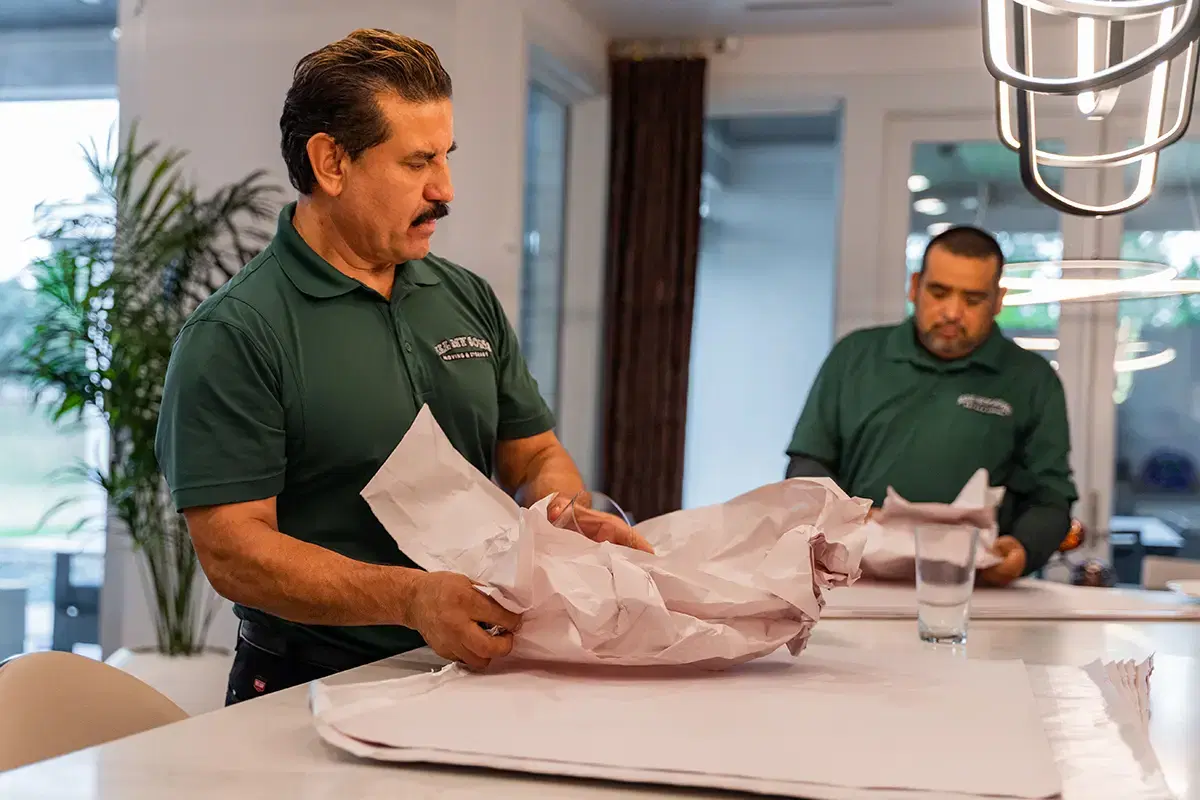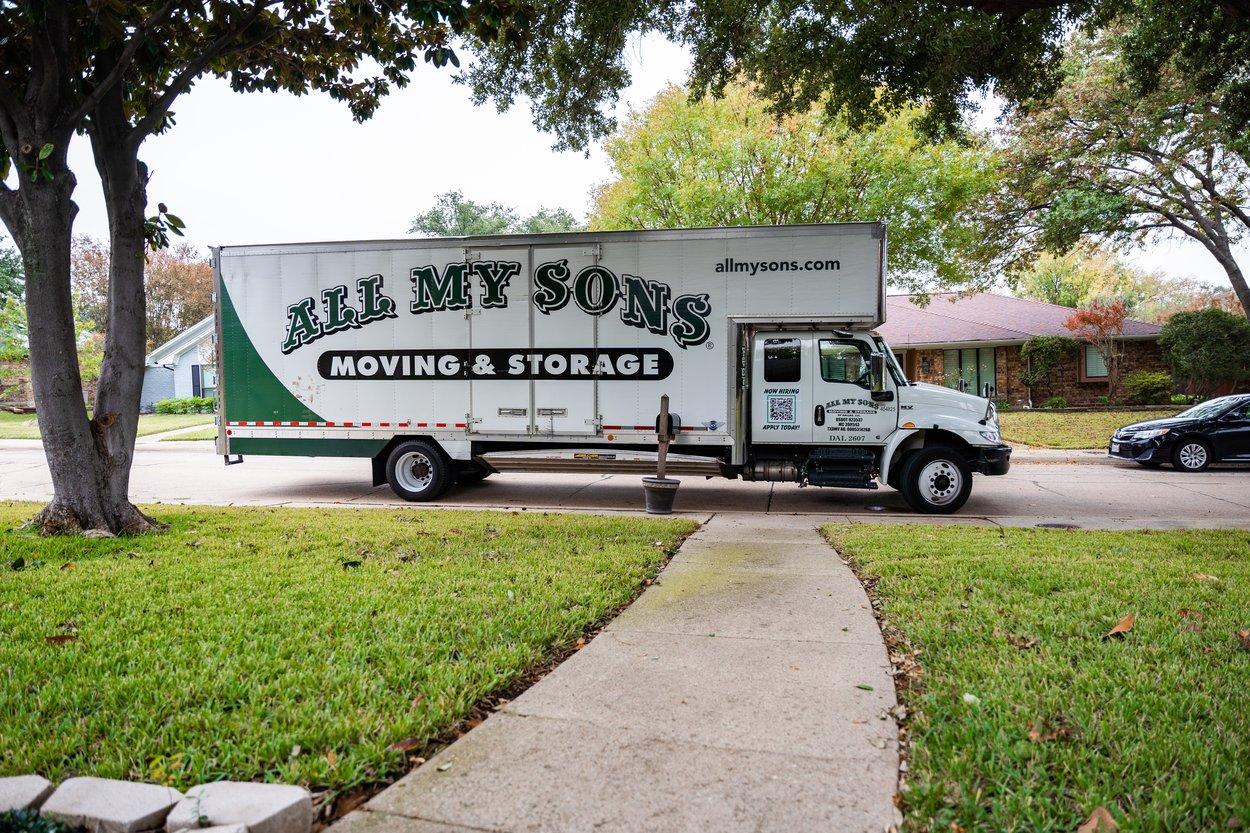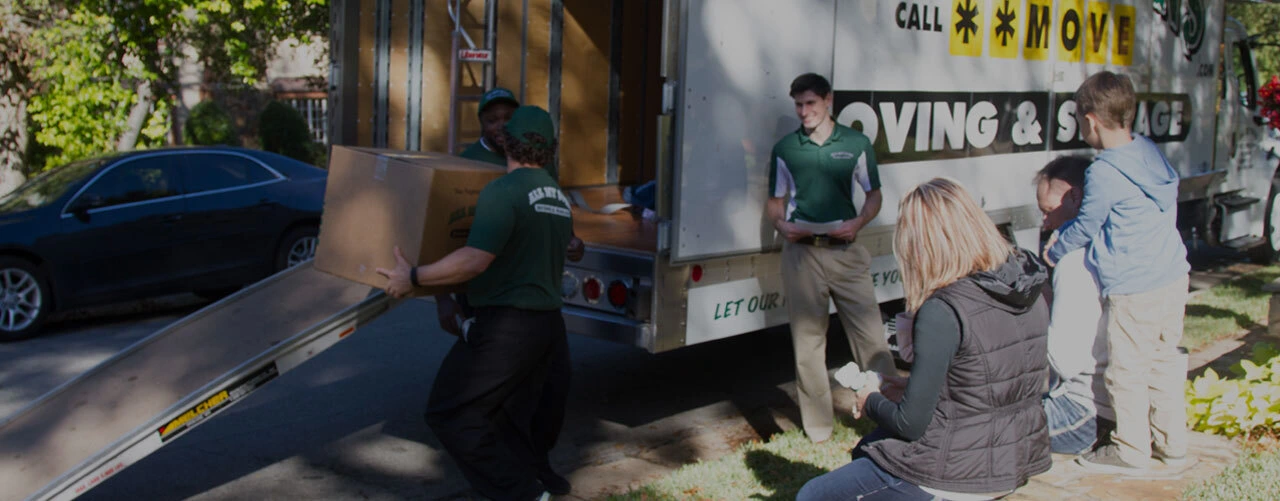Mover Beware: Relocating is Stressful
Survive the elation, heartbreak, and madness of moving with these special self-care tips from the professionals at All My Sons Moving & Storage.
According to the mental health website Very Well Mind, moving is one of life’s most stressful events, right up there with the death of a loved one, divorce or separation, long-term illness, and job loss. Moving can even trigger a relocation depression, a persistent low mood just as detrimental to your mental health as any other depression. The real estate website Anytime Estimate recently performed a survey of people who moved in 2024 and found that 82% of the movers said the process was stressful, with 42% of movers reporting their move made them cry at some point.
To keep your move going smoothly and your mental health in respectable shape, it’s important to practice good self-care during the process of your move. All My Sons Moving & Storage has been helping people move for a little over 30 years, and we’ve seen all the distress and triumph a move can bring. We’ve compiled these moving guides to help our family of moving customers make their move with less stress.
Here are five self-care tips to help manage your mental health during a move.
Self-Care Tip 1: Plan Ahead and Prepare
A well-planned and organized move causes significantly less mental anguish than the disorganized move you throw together at the last minute. One way to make sure you’re taken care of during your move is to adequately plan and prepare. When you know your move is on the horizon, stomp that moving procrastination and get going making a plan to tackle your move tasks.
Start Early: The way to conquer any massive task is to take it one baby step at a time. Start planning your move far in advance so you are not scrambling to finish tasks or frantically calling moving companies looking for someone with any availability.
Create a Moving Checklist: Write out a list of tasks to tackle before, during, and after your move. This is your moving checklist, and it will act as a roadmap to completing your move. Items on this list include researching moving companies, making plans to accommodate your pets or children, getting utilities connected or disconnected, and updating your address.
Take Inventory: Go through the items that you own as you prepare to pack. You can create a moving inventory where you document the condition of your most treasured or valuable possessions prior to the move.
Declutter: The fastest way to save time, money, and mental space during your move is to declutter, or get rid of the items that you no longer need or want in your new life. Think critically about what will fit in your new space and what you want to hang onto for sentimental reasons. Keep a box on hand while you pack for items that you will donate or sell, and trash anything that is not in good condition. Got bulky trash items like furniture, old electronics, or appliances? Call up a junk removal company like Junk.com to get those bulk items out of your hair.
With a plan in place, you might find your move feeling a lot more manageable. While unforeseeable challenges can certainly arise during a move, making a plan ahead of time can mitigate many problems before they become a huge issue. Take good care of yourself by taking care of your move well.
Self-Care Tip 2: Take Good Care of Your Body
A big component of self-care is taking excellent care of your body. The way movers treat themselves will contribute to how they feel during their move. Tired, thirsty, and hungry movers will undoubtedly experience more stress and anxiety then movers who are rested, properly hydrated, and well-fed.
Throughout your move, take the best care of your body by taking the following actions.
Keep an Exercise Routine: According to the American Heart Association’s exercise guidelines, adults should aim to get at least 150 minutes of moderate-intensity aerobic activity every week or at least 75 minutes of vigorous-intensity aerobic activity, plus muscle-strengthening activities like resistance or weight-training at least 2 days per week. Do something manageable that gets your heart rate up like taking a brisk walk, dancing, or biking, and get out some weights (or lift your moving boxes) to strengthen your muscles. Exercising regularly can give you more energy for your move by improving your circulation and increasing production of energy-boosting hormones.
Eat Nourishing Food: While it’s easy to default to eating fast food during the weeks leading up to your move, you should make your best effort to consume a balanced diet. Try to plan your meals ahead of time and eat plenty of vegetables, fruits, and lean proteins. Eat when you are hungry to stay satiated throughout the moving process. If you must get takeout, and you might at some point during the move, steer towards whole-food options rather than fast food.
Stay Hydrated: Keep a water bottle on hand and drink often, especially if you are moving during the summer. While the amount of water you need is based on your individual activity level, age, and what other sources of water you consume, according to Harvard Health Publishing most people need at least four to six cups of plain water daily.
Get Plenty of Sleep: Getting good quality sleep will help you focus and function during the day. Practice good sleep hygiene by leaving your phone in another room at night, getting to bed and waking up at consistent times, minimizing light in your bedroom, and keeping the temperature slightly cool at night.
With your body in optimal shape, you’ll experience your most ideal mental health while you’re working on your move.
Self-Care Tip 3: Check In With Your Emotions
Moving often follows significant life events like marriage, divorce, losing or getting a job, or becoming an empty nester. All of these events produce their own complex emotions on top of the emotions that already come with uprooting. Even if you are moving in happy circumstances, you still might be leaving behind an established, familiar community, and that’s a lot of change.
While you might be tempted to clamp down on your emotions and power through them, suppressing emotion can increase your stress levels and lead to physical problems like hypertension and higher rates of heart disease. Instead of suppressing or fighting emotions, check in with them. Acknowledge and accept them, and then make an appropriate response to them.
Name Your Feelings: Identifying your feelings is the first step to working through them. Sometimes you can name exactly what your feeling is, or sometimes you might be experiencing secondary emotions or general malaise and will need to dig to the root cause of your feeling.
Notice Your Feelings Without Judgement: When you have named your emotion, try to think of the emotion objectively without assigning any judgement. For example, if you’re moving to chase a dream job and feeling sad about leaving your friends behind, don’t try to dampen the sadness by telling yourself you shouldn’t feel it.
Find an Avenue for Healthy Expression: Instead of resisting emotions by immediately trying to calm down, consider allowing your emotion to lead you to a healthy mode of expression. For instance, if you feel anxiety during your move, you might acknowledge that you feel anxiety instead of fighting it, and try to plan ahead for any problems you might be fearing.
If you are having trouble dealing with a particular emotion like sadness or anger, seek support and help from trusted family, friends, or a mental health professional.
Self-Care Tip 4: Take Regular Breaks
Give yourself time away from your moving tasks to relax, unplug, and connect with yourself, others, or nature. It’s important to set structured breaks into your moving routine so that you don’t feel too overwhelmed. Keep your breaks simple, as technology-free as possible, and make sure they’re not taking significant time away from moving tasks.
You can set breaks up as a reward to look forward to, such as promising yourself you’ll take a 15-minute break if you finish packing five boxes.
Here are some possible breaks from moving tasks.
Go on a Walk: Get some fresh air and get moving. Use your time outside to literally stop and smell the roses. If you have reached your destination, take this time to explore your new neighborhood and look around at the different shops, restaurants, and community staples present in your new area.
Talk With a Friend: Call up a friend or meet them somewhere for lunch. This can be an ideal time to say goodbye in person if you are moving long-distance.
Take a Bubble Bath: Pamper yourself with some exclusive time to relax and unwind. If you have scented candles, bath bombs, or clay masks, then make it a home spa day and turn on some soothing ambiance music.
Journal Your Thoughts: Skip a few pages ahead of your moving checklist and write down your thoughts and feelings surrounding the move. This is a great time to check in with and express your different emotions.
With regular breaks, you’ll be able to return to your moving to-do list feeling rejuvenated and refreshed.
Self-Care Tip 5: Make Connections in Your New Area
Part of the fear, dread, and stress of moving is leaving behind your established community. As loneliness can have negative health effects almost as deadly as smoking, one of the best things you can do for your overall health and wellbeing is ensure you get connected in your new community as soon as possible.
Here are a few ways you can start making new friends when you get to get to your destination.
Meet Your New Neighbors: Say hi to your neighbors when you see them out and about, or throw a special housewarming party and invite some neighbors to come visit. You can also go door to door with a small gift like tea, baked goods, or candy.
Look for Local Interest Groups: You can find local groups taking part in activities that are of interest to you through social media, apps like Meetup, the city library, or your corner coffee shop bulletin board. Join a book club, a pickleball group, a knitting club, or a role-playing game group, whatever activity makes your heart beat faster.
Explore Local Events: Get out there and see what’s happening in your new city. You can find events near you through Eventbrite, local social media, or community resources like local websites and newspapers. Attend a concert or a workshop, and get ready to meet new people.
Make the First Move: As nerve-wracking as it might be, the best way to forge great connections when you go out on your new home turf is to make the first move. When you go out, make an effort to introduce yourself and be the one who initiates conversations. The worst thing that could happen is that someone brushes you off, and if that happens just thank them for their time and move on.
Putting yourself out there can be nerve-wracking, but just remember every friend you’ve had in your lifetime was a stranger at one point. Your next life-long best buds, romantic partners, and work network connections could be waiting around the corner.
Get Your Move Done
Armed with the best self-care tips, you’ll be able to tackle your move with lower cortisol levels. Stick to your moving checklist, take great care of yourself, and make sure to prepare to forge new connections on your next home turf, and the inevitable stress of moving will melt away in the weeks that follow.
Don’t forget the most important piece of self-care you can perform: Ask for help when you need it! All My Sons Moving & Storage has been in the business of helping families and companies of every size make their move for close to 30 years, and we would be honored to take some of that moving stress off your plate. Make your move easier by opting for professional packing or just let All My Sons handle all the heavy lifting. Call 1-866-726-1579 or use the online quote form to get started on your move.
Quick Moving Tips

How to Pack Picture Frames for a Move
Follow these 5 steps to packing your picture frames so that your photos, mirrors, and prized paintings can grace the walls of your next home in great condition.

How to Prep Your New Home For Move-In
Before you start packing up to get moved, there are a few important steps you should take to prepare your new home for move-in.

How to Pack Formal Clothes for a Move
If you’ve got formal clothes hanging in the back of your closet, naturally you want to save them for your next big night out. Even if you have to move homes between then and now.


